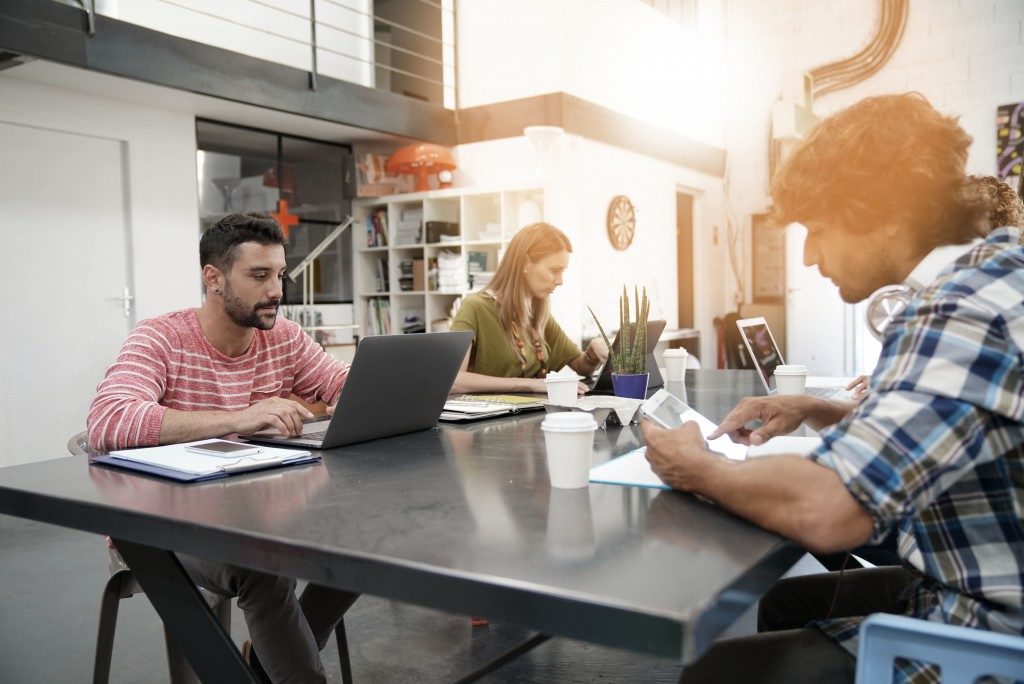The COVID-19 crisis has changed our world as we know it. It has changed the way we live, rest, and, most especially, how we work. Our post-pandemic world will look very different, and our offices and workplaces will reflect these changes most of all. As the world continues to change to curb this disease, designers and business owners are scrambling to find ways to keep employees safe during the years-long flu season. Here are some post-pandemic office changes that will stay with us for a long time.
Hybrid working as the default
Before the pandemic, studies found that commutes were growing longer at the record high, with the average American worker traveling 27 minutes one way. At the same time, a common passenger car emits about 4.6 metric tons worth of carbon dioxide yearly, according to the United States Environmental Protection Agency. Remote work is one way of solving both problems since it prevents people from having to waste time and, at the same time, stops them from contributing further to carbon dioxide emissions.
Since the pandemic, many families have invested in home offices and even lakefront properties and homes in the woods. Expert says that when COVID-19 reaches its end, what we will be left with is a combination of remote and office work, which is called the hybrid model.
Remote work or the hybrid model will also give rise to coworking virtual offices since many people still want to separate their work lives from their professional ones. Working from home tends to blur the lines between work and rest, and a well-designed and sanitized coworking space can help provide remote workers with the feel of working in an office without having to spend many hours with other people close quarters.
Prioritizing good ventilation and spacing
While we may not yet know everything there is to know about the virus, the past year has given health experts enough information about it. We have learned enough to know that we need to avoid enclosed, poorly-ventilated places, especially if it’s crowded and leaves no room for proper physical distancing.
Real estate experts project that even despite vaccines, there will still be a need for offices to have enough space for social distancing. An average of 13,000 square feet will be standard, with fewer desks and workstations to allow workers enough distance from each other.

Another thing that public health experts all over the world agree on is that one of the easiest ways to stop the spread of any contagious respiratory disease is to improve the quality of outdoor air that enters our structures. Even something as simple as an open window can go a long way in improving our offices’ indoor air quality.
If open windows are not the most suitable for the weather, a tight air seal has always been the standard way to make buildings more energy-efficient. Another promising way to increase outdoor ventilation without increasing energy consumption is a type of window design with a mechanical system of heat-exchange hidden inside the sill. This system allows the air that enters the building to be cooled or warmed depending on the season. This window type is already available in Europe.
Greenery is also an important part of giving workers a sense of safety in their offices. Biophilic design has a lot of benefits, including increased productivity and purer air. Green walls, living wall spaces, indoor plants, and other greenery will be incorporated into offices as more business owners see the need for eliminating chemicals in the atmosphere—especially since many plants also act as natural air purifiers.
A focus on public health
There has been a lot of debate about privacy concerns about contact tracing and health disclosures in the workplace. Still, the United States Centers for Disease Control and Prevention (CDC) recommends doing case investigations to help support patients who are suspected or confirmed to be infected while still prioritizing patient confidentiality. While businesses and organizations can apply these case investigation principles, the CDC recommends that businesses collaborate with health departments when working with workplace exposures. The guidelines also state that employers’ involvement will vary from case to case and depend on what the state allows. Business owners will have to find ways to monitor the health of their employees without breaching patient confidentiality. This may include temperature checks and contact tracing at the doors before the workers can enter.
Projections say we might not reach normalcy until the end of 2021, and that’s only if the new strains don’t cause delays. Until then, companies will have to find ways to keep their employees safe and healthy in the office now and even after COVID-19.


